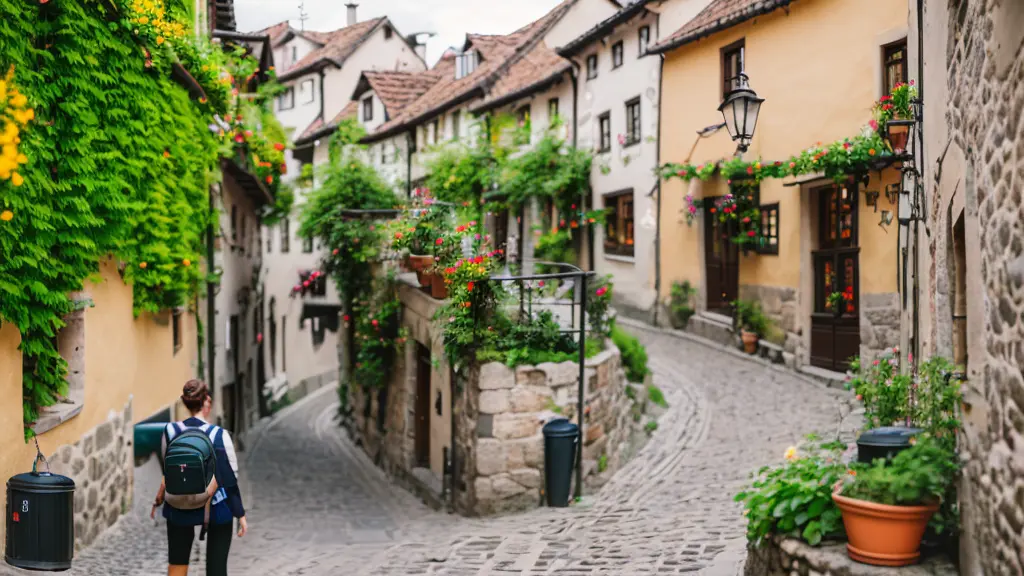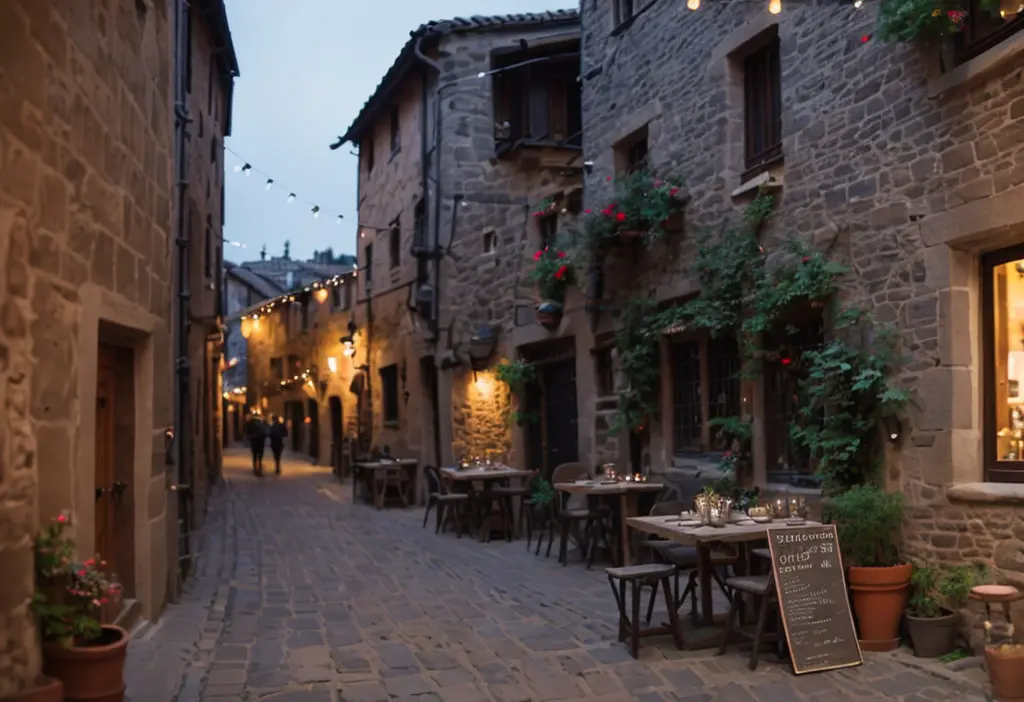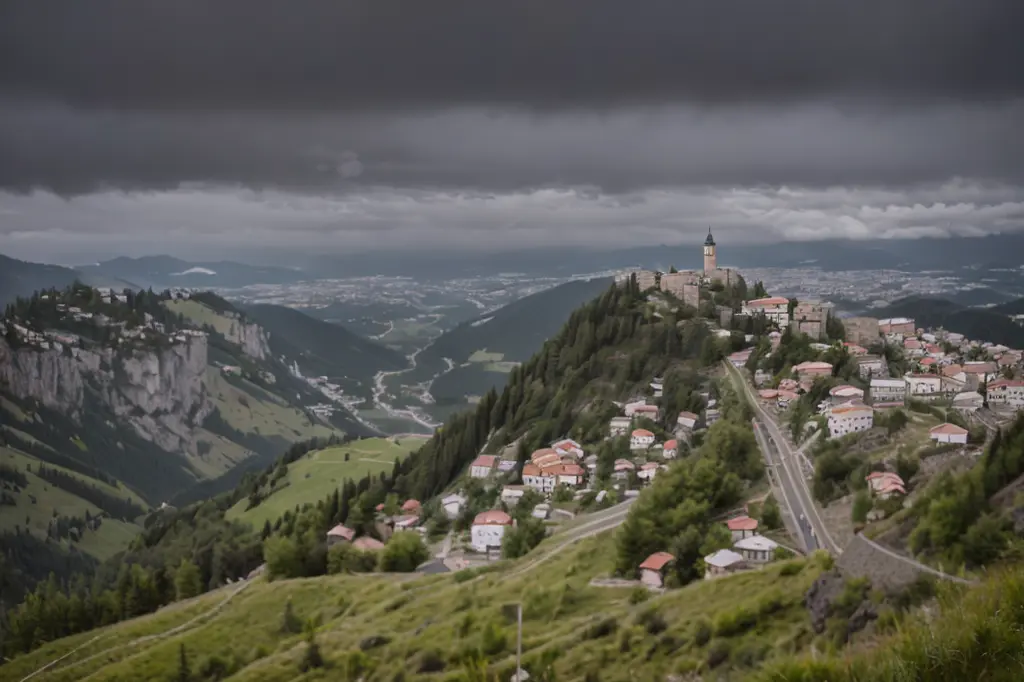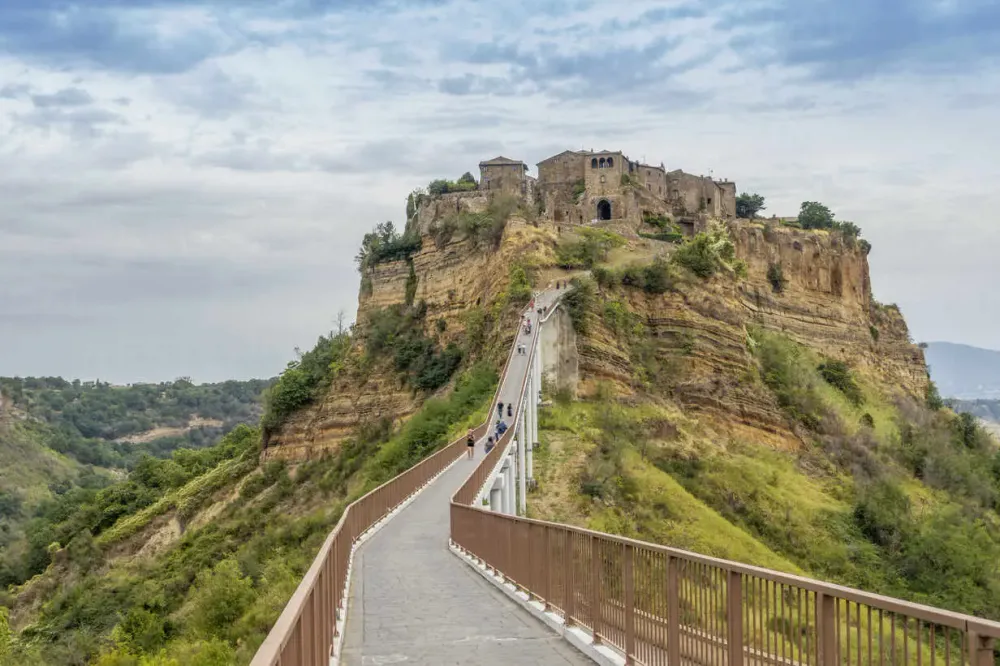A Trip to Italy’s ‘Dying City’ Is Like Stepping Into the Middle Ages
Even if Civita di Bagnoregio is unfamiliar, its images might ring a bell. It appears almost mythical—a quaint, isolated hamlet perched on a stone hill in a barren valley adorned with Mediterranean shrubs, connected only by a solitary footbridge to the contemporary world. It resembles a scene from a fairy tale, a spectral narrative, or a chapter from Game of Thrones.
Civita is affectionately known among Italians as "la città che muore" or "the dying city," a nickname stemming from its vanishing residents and precarious perch. For centuries, this village, nestled in the Lazio region between Viterbo and Orvieto, has been gradually succumbing to erosion, crumbling into the valley below. Resting atop a volcanic tuff plateau in a region prone to geological instability, Civita faces an inevitable fate—eventually, nature will prevail, and the town will vanish.

Yet, Civita di Bagnoregio continues to survive and captivate. It stands as one of Italy’s most mysterious and romantic sites, accessible only through a dramatically steep and picturesque footbridge that links it to the larger town of Bagnoregio. Within the town’s walls, a mere ten-minute stroll spans the entire village. Despite its tiny size and scant permanent population, Civita attracts nearly a million visitors annually, each paying €5 (£4.25) to cross the bridge.
“Visitors fall in love with Civita,” comments Lucianna Coppola, a tour guide from nearby Orvieto. “For those from bustling modern cities, it’s a completely unique experience. Even for Italians accustomed to ancient stone towns, Civita offers a rare glimpse into a bygone era.”

Pause for a moment at Porta Santa Maria, the town’s main gateway. A brief walk leads to Piazza San Donato, the village’s central square, which serves as its communal hub. Unlike typical Italian squares with stone or marble, this one retains a dirt surface, echoing its medieval origins. The charming Church of San Donato, initially erected in the 5th century and remodeled in the 16th century, houses ancient frescoes, stone altarpieces, and a 15th-century wooden crucifix, reportedly crafted by a student of Donatello. Around the square, you'll find cafes, eateries, and souvenir shops. Among them is Acqua di Civita, a venture by three young locals who have developed a line of perfumes and skincare products inspired by the town. They also offer accommodations in tastefully restored rooms with access to a fragrant herb garden used in their products.
Also in the square, the Geological and Landslide Museum provides insights into Civita’s geological formation, its centuries-long degradation due to natural disasters, and the efforts to delay its demise. The museum also showcases a captivating collection of historical photographs depicting the town’s evolving landscape.
Nearby, Antica Civitas, a private museum within a network of ancient Etruscan caves, offers a glimpse into the past through a self-guided tour featuring antique photographs, tools, and artifacts that recount the caves’ historical use for refuge and storage.

Further along, the immaculately maintained Giardino del Poeta, or Garden of the Poet, is a private haven where a small donation grants entry to a beautiful assortment of flowers, trees, and expansive views at the village’s edge.
My preferred dining spot in Civita is Osteria al Forno di Agnese. Originally the village bakery and communal oven, this cozy establishment has welcomed guests since 1968. Co-owner Manuela Settini, whose husband is the grandson of the eponymous Agnese, serves as a custodian of Civita’s shared history. Over coffee, we perused her collection of family photographs, newspaper articles, and old pictures, including ones of donkeys transporting supplies along a narrow path—the sole access route following the WWII bombing of the bridge linking old and new Civita. The 1965 construction of a sturdy footbridge, since replaced, reintroduced a long-isolated Civita to the world, attracting affluent Italians who restored the town’s deserted homes as vacation properties. Today, many residents, like Alberto Salvatore, a lawyer from Florence, spend part of their time here, drawn by Civita’s tranquil pace. “It’s about choosing a slower life,” he explains. “I leave the chaos behind when I come here.”
Living in Civita means regular trips to Bagnoregio for essentials, as the village has no stores besides souvenir shops. Residents and workers commute using mopeds, scooters, and small quad vehicles for transporting goods or aiding those unable to walk. Settini, who resides in Bagnoregio and rides a bright red Vespa to her restaurant, recalls Civita before the influx of tourists that began in 2014 when the mayor initiated an entrance fee. Similar policies have been adopted in Venice and Cinque Terre. On peak days, as many as 10,000 visitors can flood into Civita. “It’s overwhelming,” she admits, “but this place has enriched my life significantly.”
Getting there
ITA Airways offers flights from London Gatwick to Rome Fiumicino Airport starting at £169 return. Acqua di Civita provides accommodation from €130 per night, including breakfast, located on Civita di Bagnoregio’s main square. Reaching Civita di Bagnoregio requires a car rental or private transfer, with a 20-minute walk from the nearest parking area—a trek that feels even longer on a sweltering summer day.





